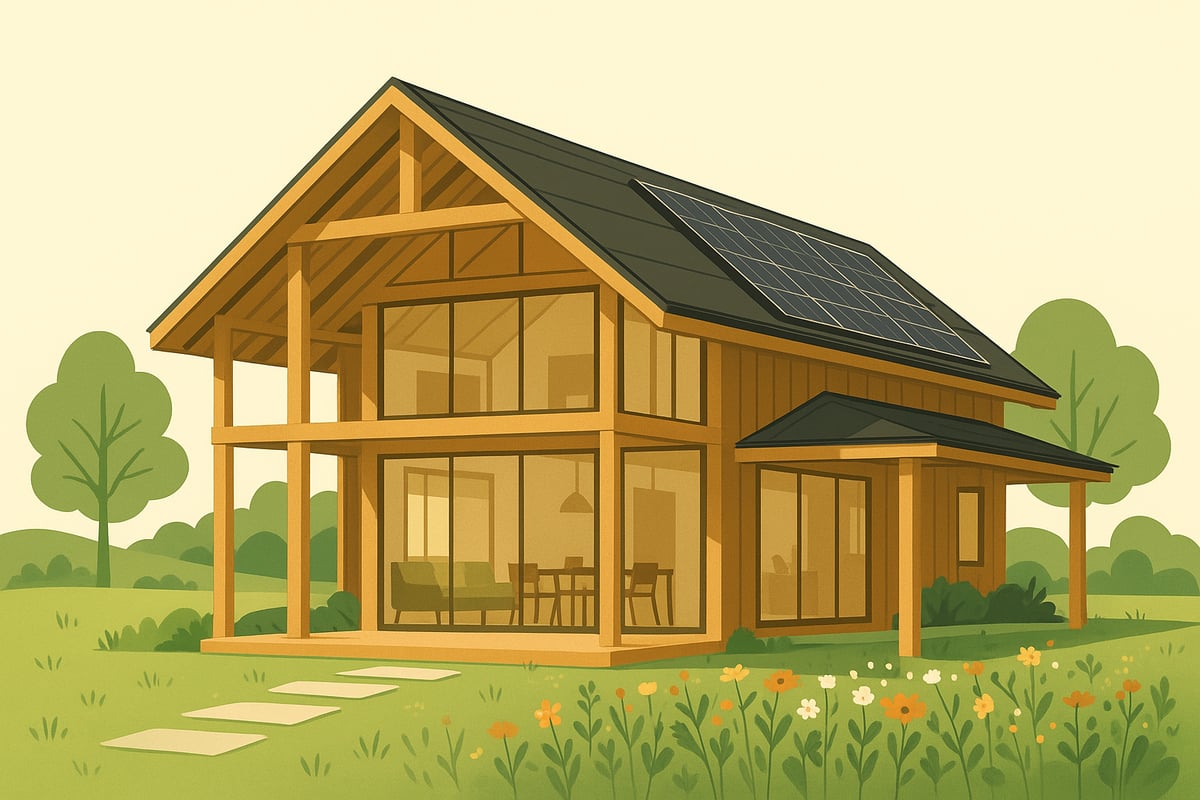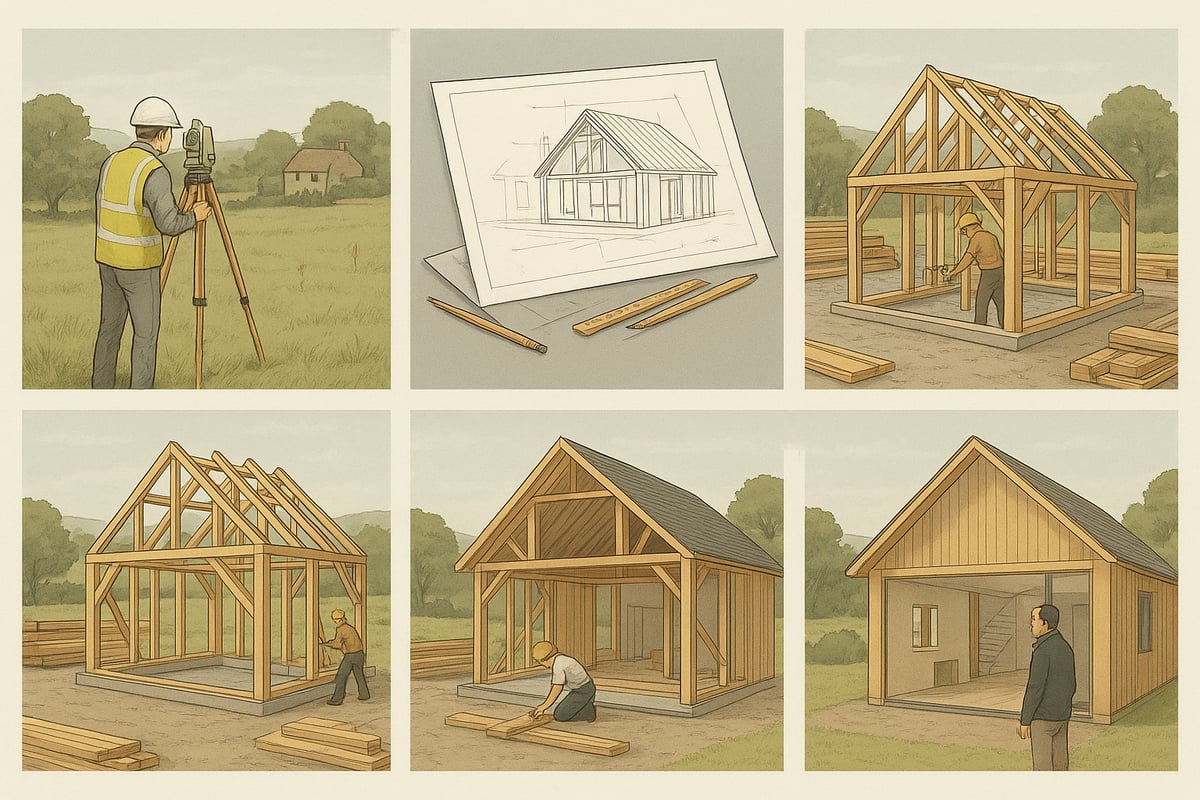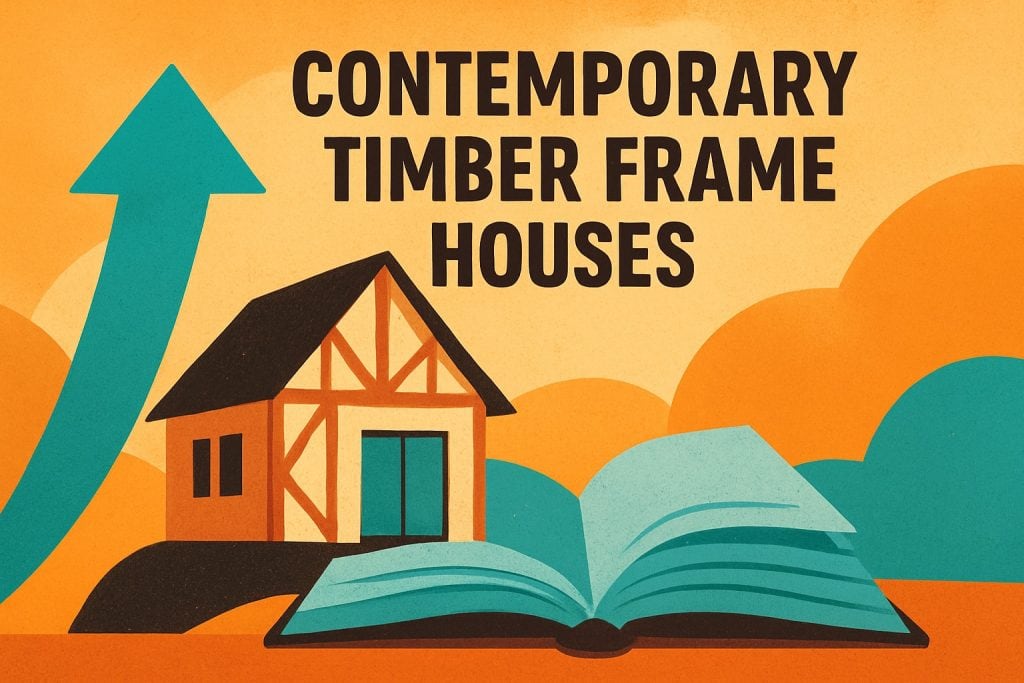Across the UK, the popularity of contemporary timber frame houses is soaring as more people seek sustainable and stylish living options for 2025. These innovative homes are capturing attention with their eco-friendly materials, energy efficiency, and modern designs.
This essential guide will walk you through every aspect, from the latest architectural trends to the practical steps of planning and building. Discover the unique benefits, cost considerations, and the most exciting future developments in timber frame construction.
Whether you are dreaming of a greener lifestyle or ready to start your project, this guide provides the inspiration and practical advice you need.
Understanding Contemporary Timber Frame Houses
Contemporary timber frame houses are rapidly reshaping the UK's residential architecture. Their distinctive blend of tradition, innovation, and sustainability makes them a compelling choice for homeowners in 2025. Let us break down what sets these homes apart and why they continue to gain traction.

Defining Timber Frame Construction
At their core, contemporary timber frame houses use a structural skeleton of posts and beams rather than relying primarily on brick or blockwork. This method, rooted in centuries-old British building traditions, employs robust joinery techniques that interlock wooden components for impressive strength.
Unlike traditional masonry homes, the main load-bearing elements in timber frame construction are visible and celebrated as part of the interior aesthetic. Classic examples, such as the restored Wealden hall houses in Kent, demonstrate the enduring appeal of exposed timber structures. Today, this heritage is being reimagined in cutting-edge residential projects across the UK.
Modern Design Features and Innovations
The hallmark of contemporary timber frame houses is their embrace of light, space, and technology. Open-plan layouts flow seamlessly, aided by extensive glazing that blurs the boundary between indoors and outdoors. Expansive sliding doors and floor-to-ceiling windows are now standard features.
Smart home integration is increasingly common, allowing owners to control lighting, heating, and security with ease. Engineered woods, like cross-laminated timber, provide both flexibility and strength for innovative shapes and spans. For a closer look at how these trends shape real-world projects, explore Modern Timber Frame Home Designs to see how architects are pushing the boundaries between form and function.
Sustainability and Eco-Friendly Materials
A major draw of contemporary timber frame houses is their environmental performance. Using sustainably sourced timber, often certified by FSC or PEFC, ensures responsible forestry practices and supports renewable resource cycles.
Timber construction leaves a lighter carbon footprint compared to concrete or steel, actively storing carbon within the building fabric. Many new builds achieve ultra-low energy standards, with some even reaching Passivhaus certification. Case studies highlight homes that combine natural insulation, airtight construction, and renewable energy for exceptional efficiency.
Popular Styles in 2025
Design variety is a defining feature of contemporary timber frame houses. Minimalist Scandinavian-inspired homes, with their clean lines and pale timber finishes, remain highly sought after. Urban infill projects showcase compact, clever layouts suited to city living, while rural retreats blend seamlessly into the countryside.
Hybrid designs, merging timber with glass, steel, or stone, create visually striking homes that balance warmth with modernity. An award-winning oak frame house in Yorkshire exemplifies this trend, pairing exposed beams with sleek architectural glazing for a dramatic effect.
Advantages Over Traditional Builds
Speed and efficiency are key advantages of contemporary timber frame houses. Prefabrication allows for rapid assembly on site, reducing build times significantly. Superior insulation and airtightness translate into lower energy bills and greater comfort year-round.
Homeowners enjoy vast scope for customisation, from bespoke layouts to unique design features. Market data shows the timber frame sector's share of new UK homes has risen steadily from 2022 to 2025, confirming its growing popularity among self-builders and developers alike.
Planning and Designing Your Timber Frame House
Embarking on the journey to build contemporary timber frame houses is both exciting and complex. Careful planning at every stage ensures your dream home will stand out for its beauty, efficiency, and long-term value. Let us explore the essential steps, from choosing the right plot to budgeting wisely for your unique project.

Site Selection and Preparation
Selecting the ideal site for contemporary timber frame houses is crucial for success. Begin by considering orientation for natural light, ease of access for construction vehicles, and proximity to local amenities. Planning permissions are a key factor, especially in protected or rural areas.
Environmental factors such as soil quality and flood risk should be checked early. Arrange soil tests to confirm ground suitability and consider the ecological impact of your build. Both rural plots with sweeping views and urban infill sites can work well, provided there is careful preparation.
Create a checklist for your site search:
- Southern exposure for passive solar gain
- Convenient road access
- Favourable local planning context
Preparation at this stage lays the foundation for a smooth build.
Working With Architects and Designers
Engaging architects experienced in contemporary timber frame houses unlocks the full potential of your vision. Choose professionals who specialise in this construction method, as they understand the nuances of timber engineering and design flexibility.
The design process is highly collaborative. Start with a detailed brief outlining your lifestyle needs, then refine ideas through digital modelling and 3D visualisations. These tools offer a realistic preview of your home, helping you make informed decisions before construction begins.
Typical project timelines depend on complexity, but early engagement with your architect streamlines approvals and delivers a design that fits your aspirations and budget.
Navigating UK Building Regulations
Compliance with UK building regulations is essential for all contemporary timber frame houses. Key areas include fire safety, where timber must meet strict resistance standards, and structural integrity to ensure long-term durability.
Energy performance is another focus, with contemporary timber frame houses often exceeding minimum insulation and airtightness requirements. Stay up to date with evolving regulations by consulting resources from your local planning authority or the Planning Portal.
Working with architects and contractors familiar with timber frame standards reduces compliance risks and keeps your project on track. Proper documentation and regular checks will support a trouble-free approval process.
Customisation and Bespoke Options
One of the greatest advantages of contemporary timber frame houses is the ability to customise layouts to fit your lifestyle. Tailor your home to include vaulted ceilings for a sense of space, mezzanines for flexible living, or dedicated home offices for remote work.
Hybrid designs, blending timber with glass, steel, or stone, are increasingly popular. These combinations offer both visual interest and structural benefits. For more insights on how hybrid construction enhances flexibility and performance, see Timber Frame Hybrid House Benefits.
Client-driven projects often feature unique elements like panoramic glazing, open-plan kitchens, or eco-friendly materials. Your choices make the final result truly one-of-a-kind.
Budgeting and Cost Planning
Understanding the financial aspects of contemporary timber frame houses is essential before breaking ground. Typical self-build costs range widely, influenced by location, material choices, and design complexity.
Here is a simple comparison table:
| Build Type | Avg. Cost per m² (2024) |
|---|---|
| Timber Frame | £1,600 – £2,400 |
| Masonry (Brick/Block) | £1,800 – £2,600 |
Factors affecting your budget include site conditions, bespoke features, and the need for specialist contractors. Early cost planning, with input from your architect and builder, helps avoid surprises and ensures your vision is achievable within your means.
The Timber Frame Building Process: Step-by-Step
Building contemporary timber frame houses involves a series of clearly defined steps, each contributing to the overall quality, efficiency, and sustainability of the finished home. This process blends traditional craftsmanship with modern technology, ensuring every stage is carefully managed for optimal results. Whether you are considering a self-build or working with a specialist, understanding each phase will empower you to make informed decisions and achieve your vision for a contemporary home.

Step 1: Concept and Design Development
Every successful project for contemporary timber frame houses starts with a clear vision. In this stage, you will meet with architects and designers to outline your goals, budget, and lifestyle requirements. Site surveys and feasibility studies are conducted to assess the plot's suitability and identify any constraints or opportunities.
Using digital modelling and 3D visualisations, you can refine your ideas and see how the house will look in its setting. Typically, this step concludes with an approved concept design, setting the foundation for the next stages of your contemporary timber frame houses journey.
Step 2: Securing Planning Permission
Gaining planning permission is crucial for contemporary timber frame houses in the UK. The process begins with preparing detailed drawings and supporting documents aligned with local council requirements.
Submitting your planning application involves careful attention to site access, surrounding landscape, and environmental impact. Applicants often face challenges such as neighbour concerns or design restrictions, so engaging with the planning authority early can be beneficial. With patience and thorough preparation, most contemporary timber frame houses projects secure consent and move on to the next step with confidence.
Step 3: Manufacturing the Timber Frame
Once permission is granted, the manufacturing phase for contemporary timber frame houses begins. This step involves off-site prefabrication in a controlled environment, where precision engineering ensures every component meets specification.
Factory-built elements, such as posts, beams, and insulated panels, are produced under strict quality control, resulting in faster build times and reduced construction waste. For an in-depth look at the typical process, see the Timber Frame Home Construction Process guide, which offers a detailed breakdown from design to delivery. This approach guarantees accuracy and high standards for your contemporary timber frame houses.
Step 4: On-Site Assembly and Construction
The next stage for contemporary timber frame houses is on-site assembly. The prefabricated frame is delivered to your plot and erected by skilled teams. Construction starts with foundations, followed by assembling the frame, installing the roof structure, and weatherproofing the shell.
This sequence is highly efficient, often allowing the frame to be erected within days. The rapid build time minimises exposure to adverse weather and helps keep the project on schedule. As the structure takes shape, you begin to see your contemporary timber frame houses vision become reality.
Step 5: Internal Fit-Out and Finishing
With the frame in place, attention turns to the interior of contemporary timber frame houses. Insulation is installed, followed by windows, doors, and essential services such as electrics and plumbing. Interior finishes, including plastering, flooring, and bespoke joinery, are completed in sequence.
Ensuring airtightness and energy efficiency is a priority during this step. Careful installation of membranes, seals, and high-performance insulation helps contemporary timber frame houses achieve superior thermal performance and comfort for years to come.
Step 6: Final Inspections and Handover
The last step for contemporary timber frame houses involves final inspections by building control officers. These checks confirm that the house meets all regulations for safety, structure, and energy efficiency.
Following any necessary snagging or minor adjustments, you will receive completion certificates and handover documentation. Aftercare advice is provided, and you are ready to move in. The process for contemporary timber frame houses is streamlined, ensuring a smooth transition from building site to comfortable, modern home.
Sustainability and Energy Efficiency in Timber Frame Houses
The drive for sustainability is at the heart of contemporary timber frame houses. These homes are designed to reduce environmental impact, maximise energy performance, and support a greener future for the UK housing market. By carefully selecting materials and integrating modern technologies, homeowners can achieve comfort and eco-friendly living in a single package.
Environmental Benefits of Timber Construction
Timber is a renewable resource that stores carbon throughout its life, making contemporary timber frame houses a natural choice for eco-conscious building. Compared to concrete or steel, timber construction results in far lower CO₂ emissions during production and assembly.
The process of growing, harvesting, and utilising timber actively removes carbon from the atmosphere. According to recent data, timber frame homes can reduce a building’s embodied carbon by up to 60% compared to traditional methods. For more on this, see Timber frame construction’s sustainability benefits.
Contemporary timber frame houses contribute directly to the UK's carbon reduction targets, helping to create a more sustainable built environment for future generations.
Insulation, Airtightness, and Energy Ratings
One of the key advantages of contemporary timber frame houses is their ability to achieve high standards of insulation and airtightness. These homes are often designed to meet Passivhaus or A-rated EPC criteria, ensuring minimal heat loss and superior energy efficiency.
Insulation materials commonly used include wood fibre, sheep’s wool, and PIR boards. These not only improve thermal performance but also promote healthier indoor air quality. Many contemporary timber frame houses feature triple-glazed windows and advanced membrane systems to further boost airtightness.
By focusing on these elements, homeowners benefit from lower energy bills and a more comfortable living environment all year round.
Renewable Technologies Integration
Contemporary timber frame houses are prime candidates for renewable energy technologies. Solar panels are frequently integrated into roofs for electricity generation. Air source heat pumps and mechanical ventilation with heat recovery systems help reduce reliance on fossil fuels.
Smart home energy management systems allow homeowners to monitor and optimise their consumption. There are growing numbers of case studies highlighting net-zero timber frame homes that combine these technologies for truly sustainable living.
Integrating renewables not only future-proofs contemporary timber frame houses but also increases their long-term value and appeal.
Water and Resource Efficiency
Water conservation is another core strength of contemporary timber frame houses. Features such as rainwater harvesting systems, greywater recycling, and low-flow fixtures help reduce mains water usage.
Sustainable landscaping, including wildflower meadows and permeable paving, supports biodiversity and minimises runoff. Many leading eco-build projects incorporate these elements, setting new benchmarks for resource efficiency.
By adopting these strategies, contemporary timber frame houses provide a holistic approach to sustainability that extends beyond energy use.
Long-Term Sustainability and Maintenance
Timber durability is a common concern, but advances in treatment and design ensure contemporary timber frame houses are built to last. Pressure-treated timber, protective finishes, and careful detailing guard against moisture and pests.
Routine maintenance tasks include periodic inspections, repainting exposed wood, and clearing gutters. With proper care, timber frame homes in the UK have demonstrated longevity well beyond a century.
Data shows that contemporary timber frame houses offer a long-lasting, low-impact solution for sustainable living, making them a wise choice for today’s environmentally aware homeowners.
Cost, Value, and Financing of Timber Frame Houses
Understanding the cost, value, and financing of contemporary timber frame houses is key for anyone considering this modern construction method. With the 2025 market embracing innovation and sustainability, buyers are keen to know what to expect in terms of investment, savings, and long-term value.
Initial Build Costs and Value for Money
The initial build costs for contemporary timber frame houses in the UK are highly competitive. As of 2024, the average cost per square metre typically ranges from £1,700 to £2,500, depending on design complexity, material choices, and location. This often compares favourably to traditional masonry builds, which can average £2,000 to £3,000 per square metre.
Key factors influencing cost include:
- Type of timber and quality of finishes
- Prefabrication versus on-site construction
- Site conditions and accessibility
Timber frame homes frequently offer better value for money because of faster build times and reduced labour costs. The UK government's plan to boost timber use in construction aims to make these homes even more accessible, helping to meet both economic and sustainability targets. Buyers are increasingly drawn to the efficiency and flexibility offered by contemporary timber frame houses.
Ongoing Running Costs and Savings
One of the biggest advantages of contemporary timber frame houses is their impressive energy efficiency. High-performance insulation, superior airtightness, and precision engineering mean that heating and cooling bills are typically lower compared to masonry homes.
Homeowners often report annual energy savings of up to 30%, especially when paired with renewable technologies like solar panels or heat pumps. Maintenance costs also tend to be more predictable, as engineered timber is both durable and easy to repair.
Other ongoing savings include:
- Reduced heating requirements
- Lower repair costs due to prefabricated components
- Fewer issues with damp or cold bridging
As the UK addresses its housing challenges, timber frame construction's role in delivering efficient, cost-effective homes is likely to grow, supporting households in achieving long-term financial stability.
Financing Options and Grants
Financing contemporary timber frame houses has become more straightforward, with a range of self-build mortgages and loan products tailored to this market. Many lenders now recognise the value and low risk of timber frame construction, making borrowing more accessible for self-builders and developers.
Government incentives are available for sustainable homes, including grants for energy-efficient features and renewable technologies. The push for greener building has opened up additional support, such as reduced stamp duty for highly rated energy-efficient properties.
Key financing options include:
- Self-build mortgages with stage payments
- Green home improvement loans
- Local authority grants for eco-friendly upgrades
Buyers are encouraged to research available grants and speak with lenders who understand the unique aspects of contemporary timber frame houses.
Increasing Property Value with Timber Frame Construction
Contemporary timber frame houses are increasingly seen as a smart investment. Their eco-friendly credentials and modern design appeal to a growing segment of buyers seeking sustainable living. Recent market data shows that timber frame homes retain their value well, often outperforming traditional properties in resale.
Key drivers for value appreciation include:
- Rising demand for energy-efficient homes
- Attractive design and customisation potential
- Lower long-term maintenance costs
As more buyers prioritise sustainability, contemporary timber frame houses are expected to remain in high demand, making them a compelling choice for those looking to maximise property value in the years ahead.
Choosing the Right Timber Frame Partner
Selecting the right partner is a crucial step when building contemporary timber frame houses. Your choice will shape the entire project, from design to delivery and aftercare. By focusing on expertise, transparency, and a shared commitment to quality, you can lay the foundation for a successful build.
What to Look for in a Timber Frame Company
When searching for a partner for contemporary timber frame houses, prioritise companies with strong credentials and a proven track record. Review their portfolio for a range of completed projects, from urban infill to rural retreats.
Check that the company manages in-house manufacturing, which ensures quality control and consistent standards. Look for membership in relevant trade bodies and ask for customer testimonials to gauge client satisfaction.
A transparent approach to project management, from initial consultation through to completion, is essential. Seek out teams who are responsive to your queries and offer clear communication throughout every stage.
Acorn to Oak Framing: Excellence in Timber Frame Houses
Acorn to Oak Framing sets a benchmark for contemporary timber frame houses in the UK. The company blends traditional craftsmanship with modern techniques, specialising in both bespoke and ready-made structures.

Their commitment to sustainability is evident through the use of responsibly sourced oak and detailed design. Discover more about their eco-friendly approach in their dedicated resource on Sustainability in Timber Frame Buildings.
Acorn to Oak Framing ensures compliance with all UK building regulations, offering tailored support and a hands-on approach. Their portfolio showcases a variety of completed homes across the country, each reflecting individual client visions.
Questions to Ask Your Timber Frame Specialist
To make informed decisions about contemporary timber frame houses, prepare a list of essential questions for your chosen specialist:
- Where do you source your timber and materials?
- What warranties and aftercare services do you provide?
- How flexible is your design process for bespoke features?
- Can you share recent client references?
- What is your approach to contracts and project milestones?
A clear and open dialogue from the start helps ensure your expectations align with your partner’s capabilities.
Ensuring a Smooth Build Experience
Achieving success with contemporary timber frame houses relies on proactive planning and teamwork. Set realistic timelines and regularly review progress with your architect and builder.
Collaboration is key: maintain regular communication, address concerns promptly, and document all decisions. To avoid common pitfalls, ensure all agreements are in writing and clarify roles early on.
By following these steps, you can look forward to a seamless project and a home that meets your needs for years to come.
As you've discovered in this guide, building a contemporary timber frame house is more than just a trend—it's a way to create a sustainable, beautiful home tailored to your lifestyle and future needs. With Acorn to Oak Framing, you benefit from a team that blends traditional craftsmanship with modern innovation, all while prioritising eco-friendly materials and meticulous attention to detail. If you’re ready to start planning your own bespoke timber frame project and want expert support every step of the way, take the next step and BUILD NOW.












